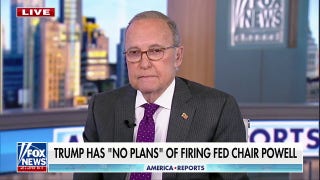Wall Street in Context

For months, markets seem to be standing in a taxi line by the side of a deserted city street, always in the rain and always at dusk. The waiting game has never been rewarded with anything but a market psychology sunk to the levels of its dreary surroundings.
The U.S. equity market persists as an uninterested bystander seemingly lined in a row of false idioms while Chinese and European equities continue to march higher. Lately, the market has been shrugging its shoulders at practically everything. While this smugness can continue for a season, it cannot continue forever.
Investor sentiment has quickly evolved from viewing the recipe of cheap oil and a strong U.S. dollar as an economic virtue, to questioning at what point things thought to be decent become damaging. The debate should continue given this week marks the fullest for first-quarter earnings season mingled with the flash PMIs - the first major economic data points for April. While consensus continues its fixation of data over-interpretation – a general failure on its creative side – a look at other asset classes capable of providing clues to subtle shifts in the economic margin.
Interest Rates
Yields fell across the curve last week – a combination of consistently halfhearted U.S. economic data, along with a consistent tailwind of Eurozone sovereign debt caused 10-year German Bund yields to hit fresh lows of 5.5% basis points (bps.) while U.S. 10-year yields tumbled 8 bps. yielding 1.86%. Albeit disconcerting, I would argue the economic data is likely to improve during the next few months. I am encouraged that continuing unemployment claims reached a new post-crisis low last Thursday.
Just one month ago, the European Central Bank (ECB) launched its quantitative easing program with the first of 19 scheduled monthly asset purchases. This drove the interest rate short end well into negative territory as German 10-year yields plummeted nearly 50% by the end of March.
Years ago, the U.S. Federal Reserve took bold action by lowering rates that had room to come down. Sadly, the European policymakers don’t have that luxury as they’ve lowered rates in a world that is already tremendously low. We’ve just turned the page to a new chapter on monetary policy – one that has never been attempted before. I hope for the best (i.e. European periphery grows without German overheating first) yet, shudder to think of the possibilities.
U.S. Dollar
The U.S. dollar was soft all last week as U.S. data disappointment continued. The euro, with Greek finances front and center, underperformed in the dollar correction relative to other G10 currencies. Outperforming against the U.S. dollar was the Norwegian kronor and Canadian dollar as together these currencies caught a tailwind with the lifting in oil prices. What’s noticeable and perhaps vaguely interesting is the U.S. dollar index falling almost 2% last week, albeit still positive 8% year-to-date yet, hasn’t managed a new high in six weeks.
Due to divergent monetary policy, U.S. Treasuries have meaningfully higher yields than the debt instruments of most other developed countries. The resulting demand has provided support for U.S. dollar which continued higher in March – hitting a high on March 13th. The gain in March marked the ninth consecutive month that the U.S. dollar has strengthened, with the DXY rising by 3%. The Brazilian Real lost 13% last month and is down 17% on the year as policy makers – in an effort to stave off inflation – raised rates for the 4th consecutive time to a six year high of 12.75%.
In Europe, the euro fell by more than 4%, its ninth-consecutive monthly decline as anticipation of a rate hike in the U.S. combined with the March ECB launch highlighted monetary divergence. Remember the recent U.S. dollar surge was chiefly a consequence of rising U.S. Fed raising rates expectations. With the rest of the world’s central banks still in the process of purchasing assets, I can’t help but think that the U.S. dollar still has room to run however, for different reasons than before.
Gold
Gold finished last week unchanged - seemingly content within a narrow trading range defined in and around the $1200 per oz. level. Gold began the year rising 10% by mid-January only to fade as sharply as it surged and, just two weeks ago was lingering near 5-year lows. It has recently bounced delivering a 1.5% year-to-date return. However, the biggest question on investors’ minds is what exactly is driving the gold price? Why the uncertainty in the very asset class that supposedly hedges against uncertainty?
Some would reason the level of real yields (i.e. an interest rate adjusted to remove the effects of inflation) is the next driver of the gold price. However, although I’m convicted that we will see an eventual and gradual lifting of U.S. real yields, I don’t think that itself will be the driver as it could be equally said that higher yields could discourage hoarding and thus, the gold price.
Others point to inflation in that when we have it we will see gold propelled to new heights. I argue that the inflation/gold relationship is unreliable at best – especially presently as U.S. inflation is viewed as the catalyst of bringing rate rises forward. My best thinking includes a menagerie of offsetting forces including – central bank indifference, international buying appetite, and rate expectations will keep gold trapped within a broad and volatile trading range.



















